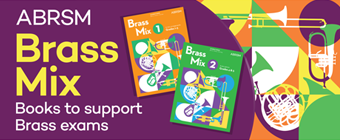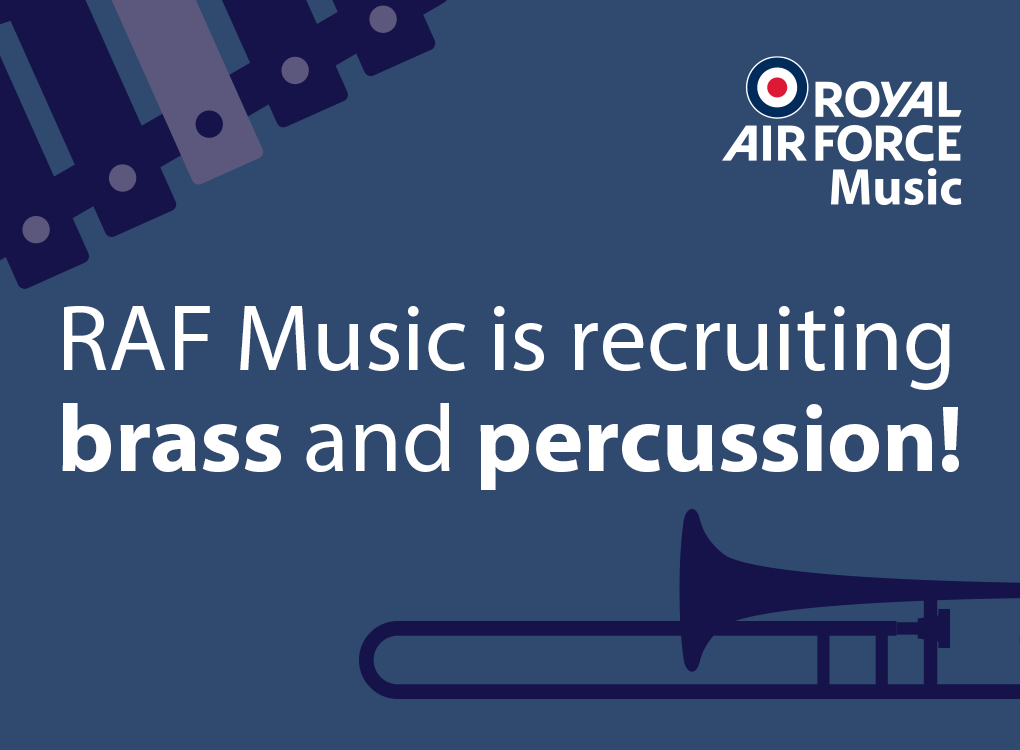We have had our hands on a couple of clever little tuning gadgets from Denis Wick to find out just how good they are.
Tuning is one of the great bug bears of playing a brass instrument - not just as an individual performer but also as part of an ensemble. If it’s on the button, joyous harmony reigns - but if it’s out of kilter it can sound as appealing as a cat scratching a blackboard with its claws.
And where as no two players enjoy the same level of aural appreciation; neither do two instruments enjoy exactly the same tuning characteristics either.
Bit of assistance
The timeless adage of ‘using your ears’ does of course help a great deal, but even nature (or top class instrument engineering) isn’t infallible. Everyone needs a bit of assistance.
That’s why having a good tuner in your instrument case is just as important as having the right mouthpiece or valve oil - without them you may never know how good you could sound?
With the help of 2013 British Open Championship ‘Best Euphonium’ award winner and 4BR Player of the Year nominee Daniel Thomas, we put two little gizmos from Denis Wick through their paces to see just how good they were.
We have to say - we were very impressed.
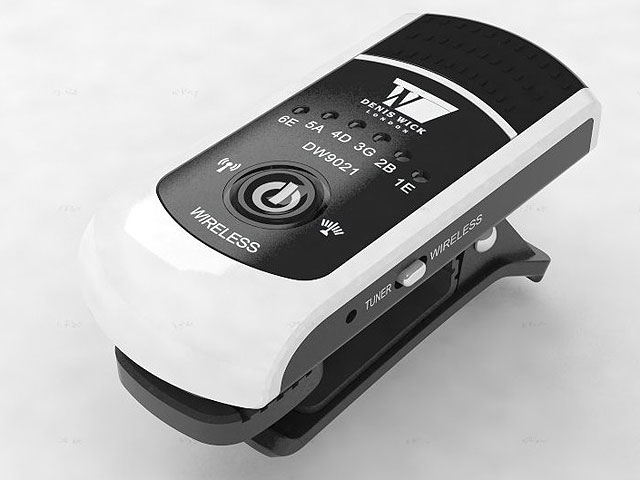
Wireless pick-up and tuner
product Code: DW9021
Price: Approx £21.00
Used with Denis Wick metronome, tuner and tone generator
Product: DW9007
Price: Approx £13.00
Technology always moves on - and so it should come as little surprise that someone has developed a neat wireless pickup and tuner combination.
This piece of crafty design means that a performer can check on their tuning even in the noisiest of conditions or in performances, by the transmitting of a signal from their instrument to a small receiver plugged into a stand-alone tuner.
Size is everything - and the compact transmitter clips unobtrusively onto any brass instrument to monitor the sound vibrations, sending the signal via the plug in receiver which then shows the results on the tuner’s display.
As the pickup isn’t a microphone, it doesn’t react to ambient sounds - only to the pitch that the instrument.
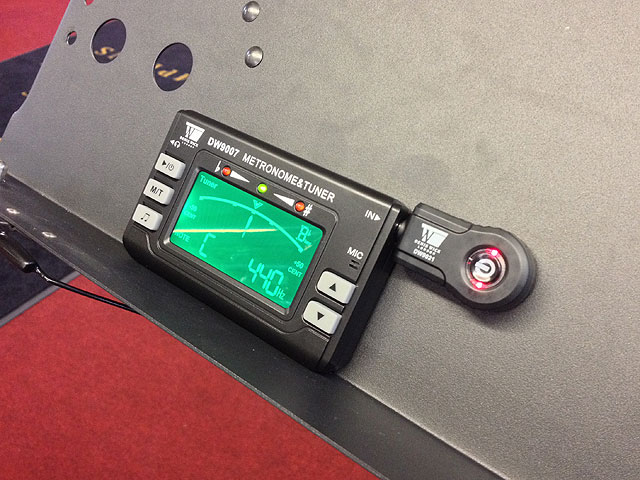
JCB digger
So even though there was a JCB digger ripping up a garage car park next to the bandroom when we tested it out, the tuning needle didn’t start flickering as if it was registering a Richter scale earthquake.
Amazingly, that was also the case when Daniel Thomas was stood playing 20 feet away in a corridor - the note registering and display turning green when perfectly in tune!
We plugged the jack of the receiver (which detaches from the pickup) into the Denis Wick tuner (DW9007), although any other make that has an appropriate socket can be used.
With the pickup placed on a bell or any tuning slide and the tuner display on a nearby stand, you can monitor your tuning progress closely and accurately without going cross eyed in the process (a bit of a problem with other clip on tuners on tubas, euphs, horns and baritones etc).
By all accounts it works on all sorts of instruments - even a harp, with virtuoso player Rachel Masters of the London Philharmonic recommending it!
It’s easy to use (you don’t have to be a technophile to understand the instructions) and once set up you can tune away to your heart’s content - even with a jack hammer or overzealous percussionist banging away in the background.
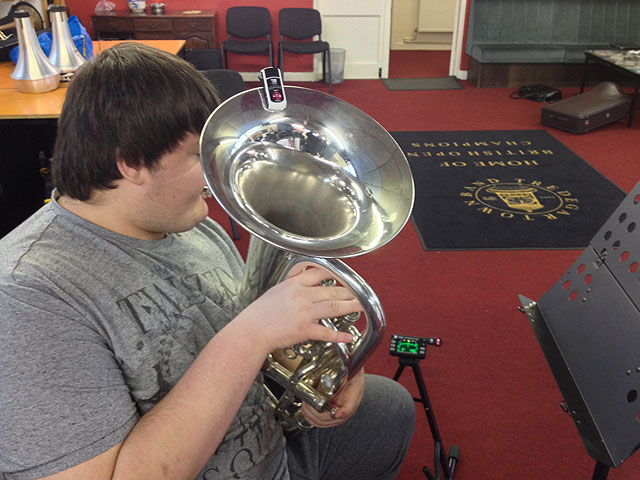
Impressed
Daniel Thomas was certainly impressed: “Once you get things set up it’s a great way to practice your tuning - and anywhere.
I attached the transmitter to the bell of my euphonium, with the display on a stand in front of me and it worked superbly. We even tried it with me out of sight and it still worked!
I think it’s a great practice tool to have with you at all times. It was of great help - especially for the more advanced player who needs pin point accurate tuning at all times.”
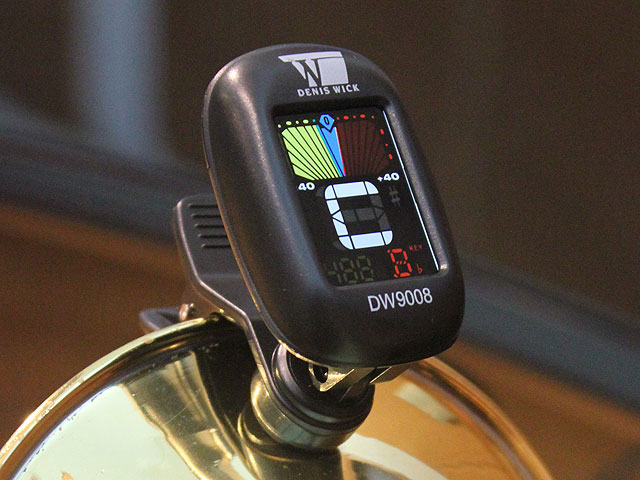
Denis Wick Clip-on Tuner
Product Code: DW9008
Price: Approx £14.00
This dinky clip-on tuner clips onto any brass instrument and works by detecting the sound vibrations without interference from outside noises – relaying the pitch information to its small screen to ensure you can see if you are playing sharp, flat, or spot on in tune.
It is reported to be accurate to ± 1% - so you can adjust your tuning by the narrowest of increments, and has a pitch range from A = 430 to A = 450, so it is suitable for players all around the brass world – from classical period instruments to the latest top line cornet or trombone.
It can also transposes at a touch of a button to C, Bb, Eb, D or F, making it ideal for the French horn or D trumpet etc.
Easy to use
Although small, it’s incredibly easy to use: literally stick the battery in, attach it to your instrument and off you go, whilst the clever little swivel mechanism means you can be placed in all sorts of places to ensure you don’t go completed boss-eyed in trying to focus on the colourful read out.
It even turns itself off if no sound vibration is detected for three minutes.
That said, due to its key fob size, it would be best to use it on a trombone, trumpet or flugel horn in a brass band where it can be attached to the bell of the instrument.
It’s an ideal practice and training tool for the student player - the colourful read out displays a needle which indicates the pitch – the screen turning from yellow (flat) to blue (spot on) to red (sharp).
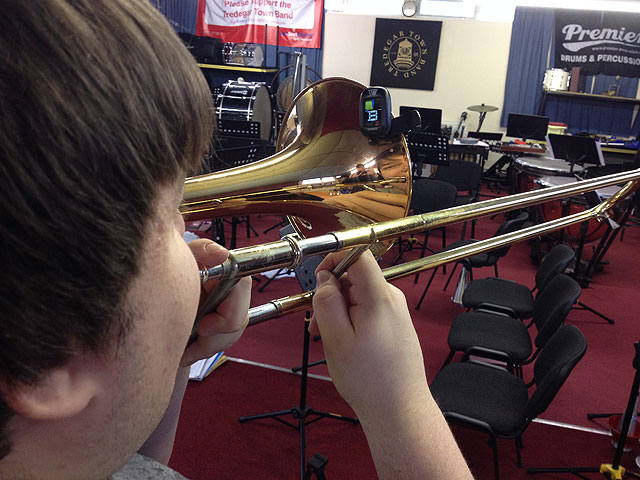
Turn blue!
Turn blue as they say (but remember to keep breathing!) and you are in tune for each note that is displayed as you work your way slowly up the range.
Although it can also be used with a practice mute, we don’t think that would be an ideal option: You don’t have to blow loud for it to work perfectly well - even in the middle of the night!!
Ideal tool
We asked Daniel for his own observations, after he used it on the euphonium and trombone.
“Although it is small, it’s so easy to use - and shows your pitch very clearly. It’s better suited for the trombone or cornet in the brass band as it can be clipped onto the bell and it’s in clear eye-line vision, but I used it without a problem on the euph.
It also gets you concentrating too - and allows you to make very small adjustments that gain an immediate response. It’s an ideal practice tool - and can be used anywhere at any time.”


